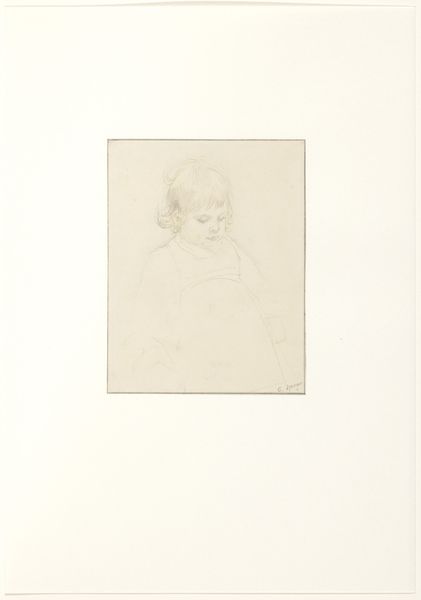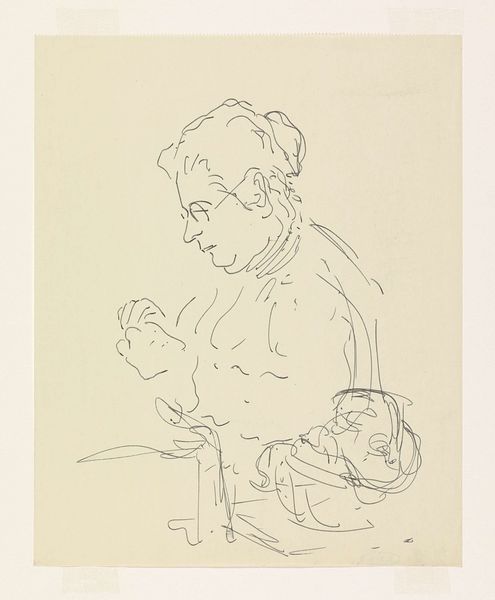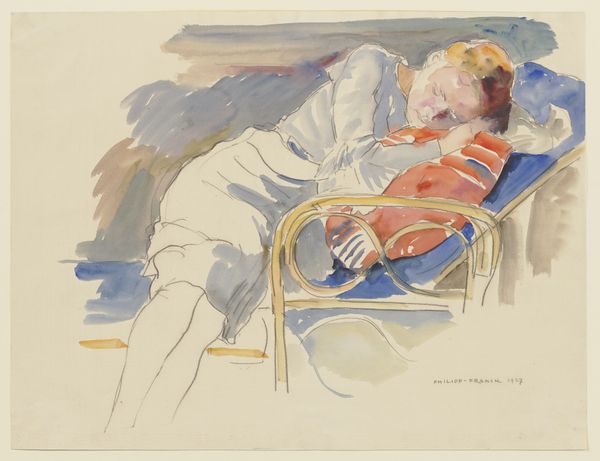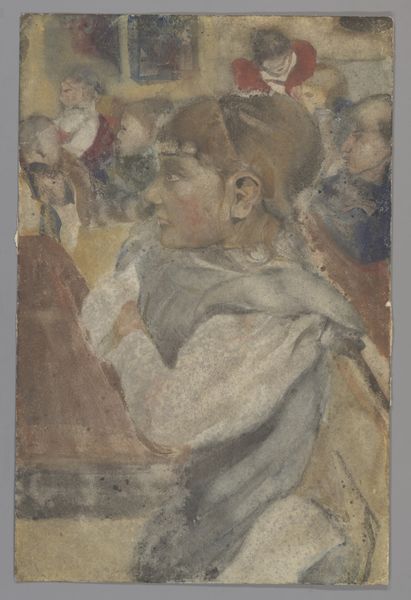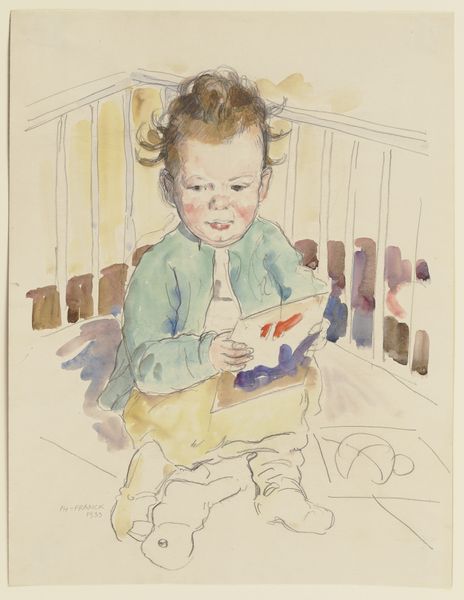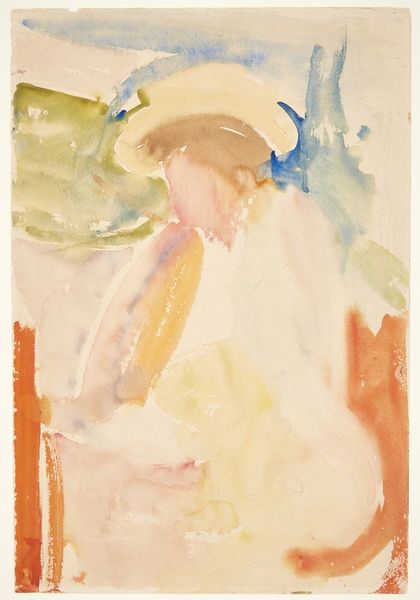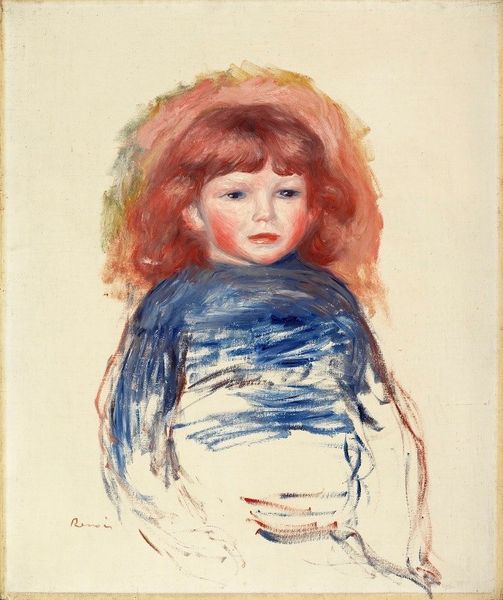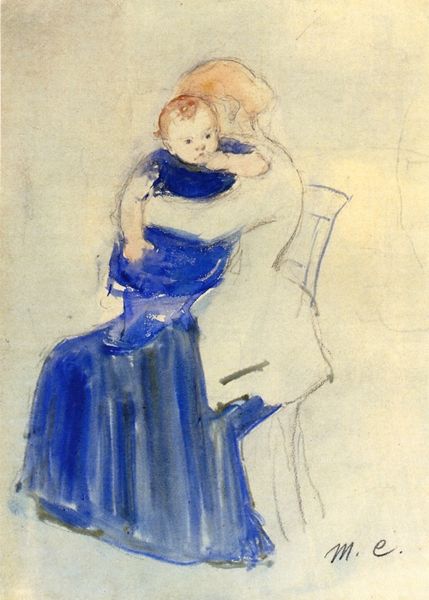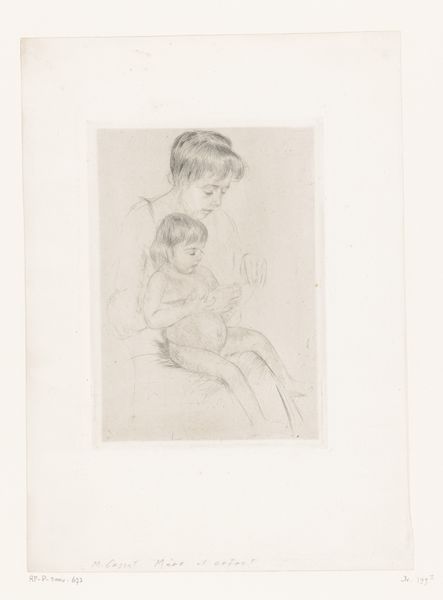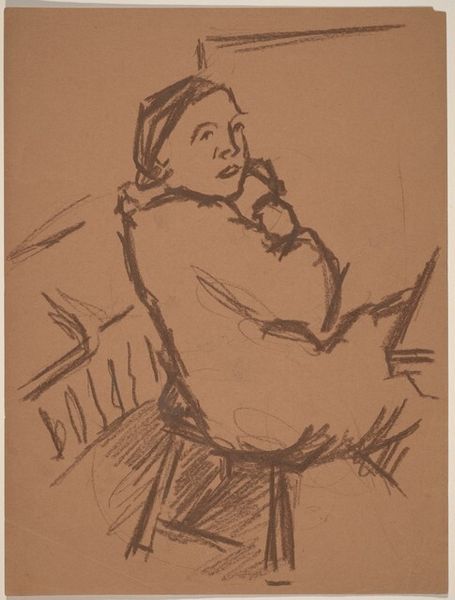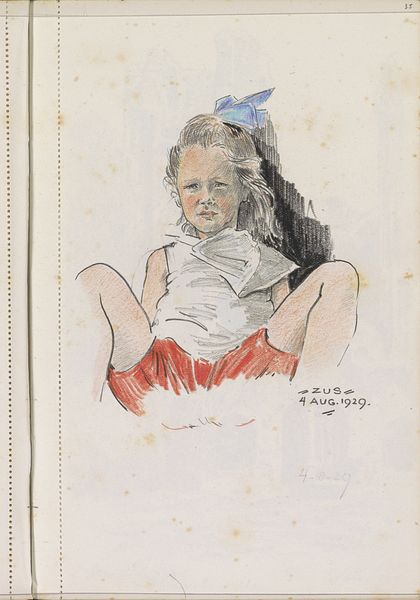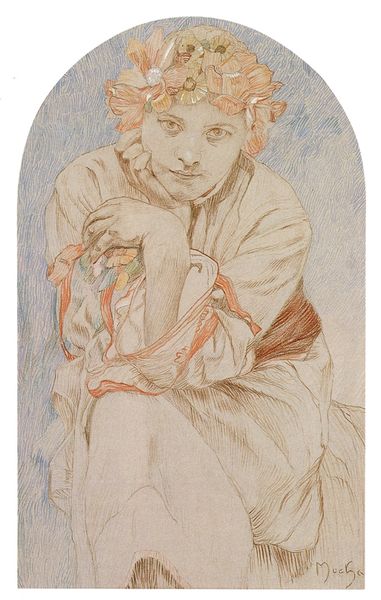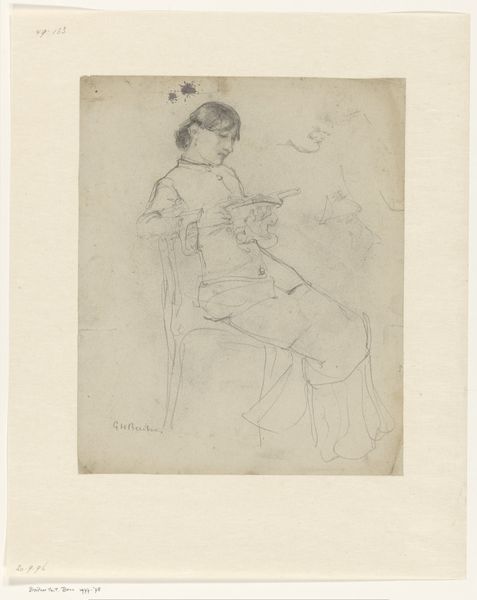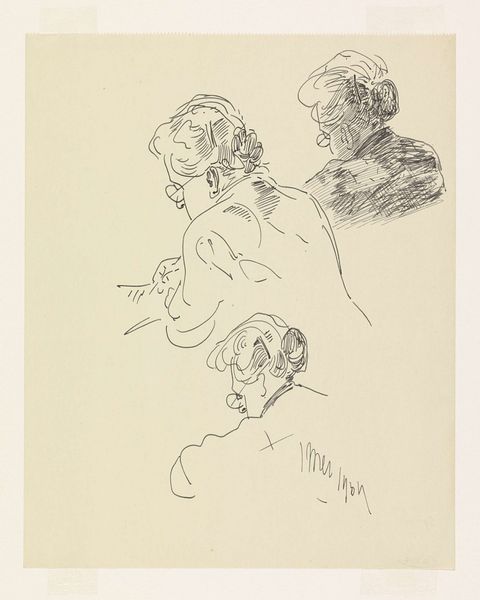
drawing, painting, paper, watercolor
#
portrait
#
drawing
#
self-portrait
#
painting
#
caricature
#
paper
#
watercolor
#
german
#
underpainting
#
surrealism
#
modernism
#
watercolor
Copyright: Public Domain
Editor: So this is Philipp Franck’s “Portrait of a Child,” a watercolor from 1933, currently at the Städel Museum. There's a vulnerability that emanates from this image, mostly due to the baby's turned profile. How do you interpret this work? Curator: It's compelling how Franck uses watercolor, a medium often associated with lightness, to convey a sense of… unease, maybe? The shadows behind the child’s head feel almost like encroaching thoughts or memories. What cultural associations might we be subconsciously layering onto this innocent scene? Editor: Is that typical for watercolors from the modernism period? To invoke discomfort and tension through shadows? Curator: Not all watercolors of this era aim for discomfort, but modernism often explores the psychological landscape. Notice how the loose brushstrokes both define and dissolve the form; consider how this artistic choice parallels the fluidity and uncertainty of identity in a rapidly changing world, specifically around the time this was created. The child is both present and fleeting. Do you get that? Editor: I see what you mean. The softness sort of blurs the boundaries. It feels like he’s capturing a moment, rather than a fixed state. Almost as though he wants to examine it closer as time passes. Curator: Exactly! The act of portraiture then becomes a symbolic act of grasping something that inevitably slips away. The underpainting itself has so much surrealist tones, which is in the symbolic gesture toward modern childhood itself during those trying times. How much can the individual's psyche even form. Editor: Wow. I never thought of a baby portrait representing a nation’s fears like that. That’s given me a completely different perspective. Curator: And isn't that the beauty of engaging with art? It offers a mirror not only to the subject, but to ourselves. The cultural lens always distorts an original intention from when art is made, which I find exciting in this piece.
Comments
No comments
Be the first to comment and join the conversation on the ultimate creative platform.
